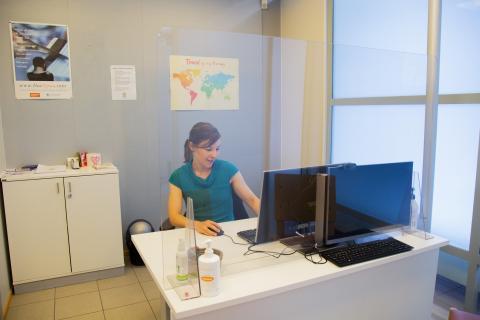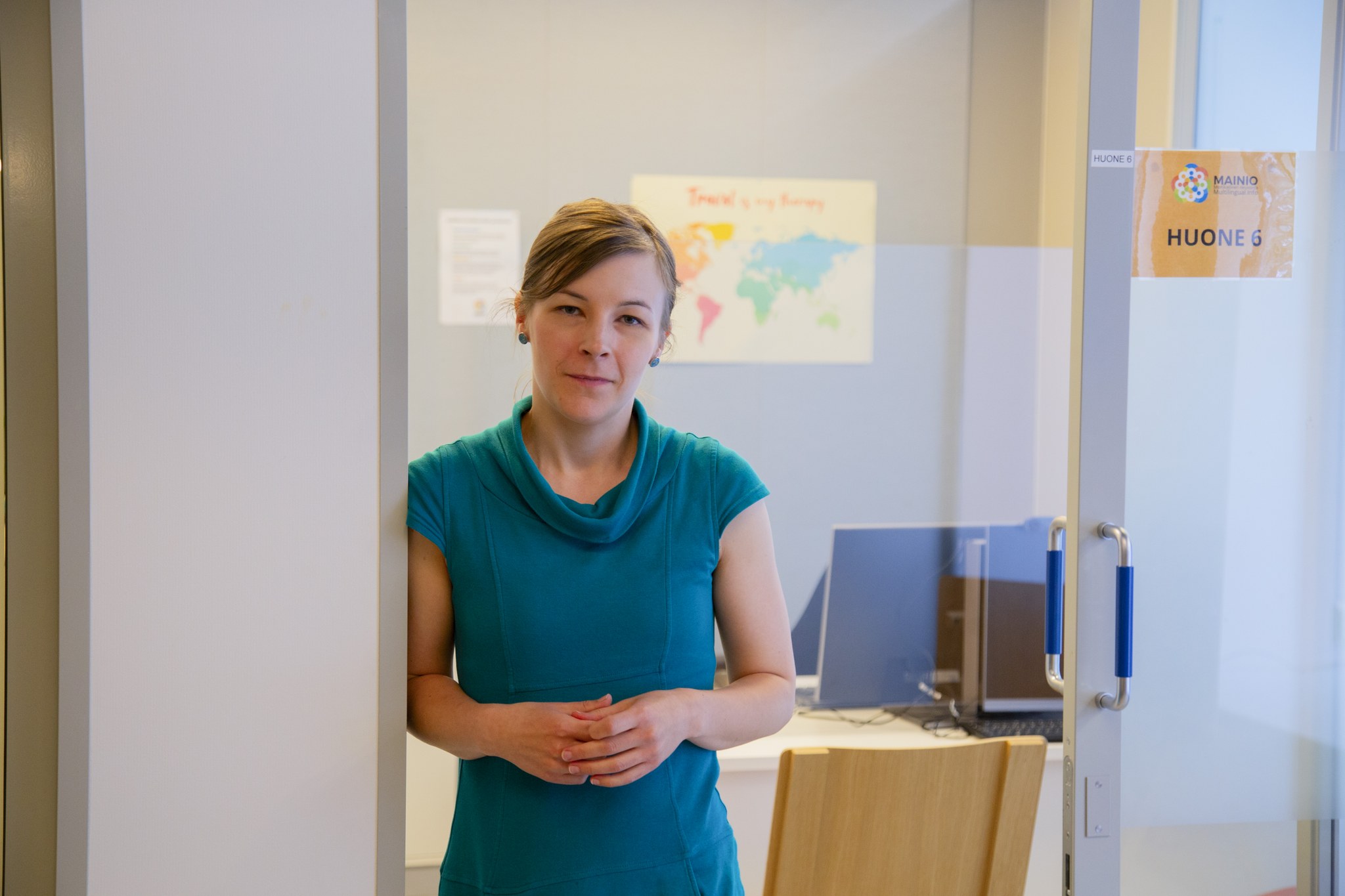Hanna-Kaisa Härme guides immigrants in Simple Finnish
The purpose of the Simple Finnish service is to ensure that customers who already possess some Finnish skills do not need to rely on services provided in their native language, which frees up more resources in those services for immigrants who do not speak Finnish.
At the same time, the customer’s language skills improve, and the customer will be encouraged to speak Finnish. The aim is that they will eventually be able to manage their affairs independently in Finnish.
So far, there is no similar service in Simple Finnish elsewhere in Finland, at least not in this form.
Härme assists her customers with all kinds of issues, directs people to the correct authorities and helps with using their services. The customer might show up with a plastic bag full of letters and ask what they should do with all their mail. The first step is to sort out all the advertisements.
Customers have been satisfied with Härme's counselling. One customer asked her if she was a teacher, since she spoke Finnish so clearly.
- Another customer told me that if everyone understood their speech so well, they would be able to use any service anywhere.
In other words, it is not only a question of speaking clearly, but also of being able to understand the customer.
However, Härme notes that she also needs to pay constant attention to the clarity of her speech.
- Sometimes, I notice that I’m also using language that is too complicated, she says.
Plenty of new things to learn
Customers are happy to use Härme’s services more than once.
- International House Tampere is also considered a safe place to use services in Finnish, as it is specifically intended for foreign-language speakers. On the other hand, some customers specifically want to talk to a Finnish person, and there are also cultural issues that need to be considered. For example, women will occasionally want to speak to a female employee, she says.
Härme, who works as a service counsellor for Mainio’s multi-lingual advisory services, started at her job in the second half of 2022. At first, she had to spend a lot of time catching up on topics that customers might need help with, such as residence permits. At the same time, she was trying to learn how to understand people and how to speak to them in Simple Finnish. As she familiarised herself with the issues, the work became easier.
- These days, it might only take half a word for me to understand what the customer wants to discuss. Of course, I still encounter new lessons to be learned and changes to old issues, Härme says.
Härme is a trained Russian interpreter. While unemployed, she volunteered with Ukrainian refugees, among other things, and this eventually led her to a job at Mainio. During her unemployment, she also studied Simple Finnish and received training on the topic.
- I’m a bit of a walking paradox: I’m from Savonia, but I still claim to speak Simple Finnish, she laughs.
Härme strives to continuously deepen her Simple Finnish skills. While her main focus is on spoken language, she is responsible for the Simple Finnish versions of materials provided by her workplace.

Simple Finnish benefits everyone
According to Härme, Simple Finnish is an equal way of serving all immigrants. International House Tampere, which is a part of Employment and Growth Services, offers services in Tampere’s most common languages in several locations. However, for speakers of rare languages, the services available are more limited. Therefore, being able to receive advice in their own language and in Simple Finnish is an exceptional service for them.
And there's plenty of languages here. Härme estimates that she has encountered native speakers of 25 different languages in the first half of the year. Chechen has been one of the most exotic, and she has also encountered several African languages. However, she and the Chechen customer had Russian as a shared language.
- It was fair, since neither of us spoke Russian as a native language.
Härme emphasises that Simple Finnish does not only benefit speakers of foreign languages, who make up ten per cent of Tampere's residents. It also helps people with disabilities, elderly people and those with attention deficit disorders or dyslexia. Even people who could otherwise read normally may have their functional capacity temporarily reduced for one reason or another. It is estimated that 15% of all citizens benefit from the use of Simple Finnish for various reasons.
- Why couldn't the front pages of the service website be in plain language? It would not hurt anyone, and those who are able to understand more complex language could easily navigate to a different page on the site. Instead, people who may have limited digital capabilities now have to search the front page for a link to a possible Simple Finnish page, she says.

